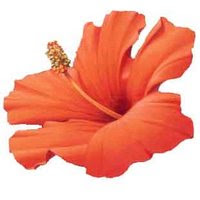(Click on pic for enlarged view)
Other relics denoting the early arrival of Hinduism in South East Asia are to be found in Funan (Cambodia), Champa (Vietnam) and Indonesia.
The word Malauir for Malaya is mentioned in the Ramayana circa 500 BCE (Before Common Era) and in other Indian literature. It is likely that Indian forays into SEA began some time before that, and the early route they took was probably the land one through Burma and Thailand to Malaya.
But, we must view the arrival of a certain man, Kundunga, in of all places, Kutai, Kalimantan on the east coast of Indonesian Borneo in about 300 CE, with nothing short of absolute astonishment! Eventually, when historians manage to piece together all the clues and evidence, Kundunga's journey from India to Kutai some 3,000 kilometres away, will be recognized as one of the great voyages in history, to rank alongside those of Christopher Columbus, Vasco da Gama, Ferdinand Megallen, James Cook and others.
And do note with a degree of admiration that Kundunga's journey took place more than a thousand years before that of Magellen who is credited with being the first man to circumnavigate the globe! How did he arrive there? What type of boat or ship did he use and who accompanied him? These are interesting matters beyond mere historical curiosity. Ancient skilled Indian sailors from the Coromandel (east) coast of India, called paradar, knew the secrets of the periodicity of the north-east and south-west monsoon winds. Later, in the 15th century, they were known in Melaka as Keling (from the Kalinga region)!!
So, who is Kundunga?
Evidence of Kundunga's presence in Kutai in 300 CE is represented by seven stone inscriptions or Yupas discovered in the late 1800s in Muara Kaman. The script used is Pallava Sanskrit. Of the seven, only four inscriptions have been translated, the other three presumably eroded beyond repair.
Kundunga is credited with being the founder of the kingdom of Kutai Martadipura, with the title of Maharaja Kundunga Anumerta Dewawarman.
The inscriptions, referred to as the Mulavarman Yupas, describe his great achievements, and provide his ancestry as Kundunga (grandfather), Asvavarman (father) and Mulavarman (grandson). CLICK HERE.
Here are some of the Sanskrit inscriptions and translations:
There is also mention of a horse sacrifice - the Ashwameda - mentioned frequently in the Mahabharata and Bagavad Gita. as is the incredible story of Bhagiratha. CLICK HERE AND HERE.
Indonesians claim that Kundunga or Kudunga is probably of Indonesian origin. But, this clearly defies logic. Historians from other countries have identified Kundunga, a rare name even for India, as of probable south Indian origins. How else can one explain all these references in Sanskrit and to Brahmins, ancient Hindu religious practices, mythology and connotations to gold and suvarnam (suvarnadvipa)? This is expertise and knowledge that must have come from an educated and knowledgeable Indian, and there is no record ever of an Indonesian who went to India to acquire such knowledge two thousand years ago.
This type of thinking is right up there with our local historians' views that ancient iron foundries discovered in Bujang Valley indicate that 2000 years ago, the indigenous populace of Malaya had suddenly acquired new technical skills out of thin air, despite the entire area having been settled by immigrant Indians and Hindus. The Iron Age had arrived in Malaya overnight! Where did the iron come from? Where did it go? No local historian dares answer!
Even if we accept that Kundunga was an Indonesian, it begs the question where he obtained all that expert Sankrit, Indian and Hindu knowledge from. Who was his guru and/or Brahmin priest- surely an Indian from India? In the world of 2000 years ago, only a few knew how to read and write in Sanskrit, fine-tuned by India's Panini in 400 BCE. It's not like today when we have the internet to facilitate long-distance learning of almost anything.
It is our duty to research and investigate historical figures such as Kundunga. For far too long have we been in awe of the achievements of western explorers. We have real heroes at our door-steps who will be able to stand shoulder to shoulder with their western counterparts. But who will put aside their natural prejudices, fears and bigotry, and search for the truth?




















4 comments:
Evidence of ......
Takbolehland historians pls take note. it's sinful to fabricate crap for our young
Read n know this dUMNOputras...
BOLIHLand historians & archeologists will bury all these evidence lah.
As usual.
Post a Comment